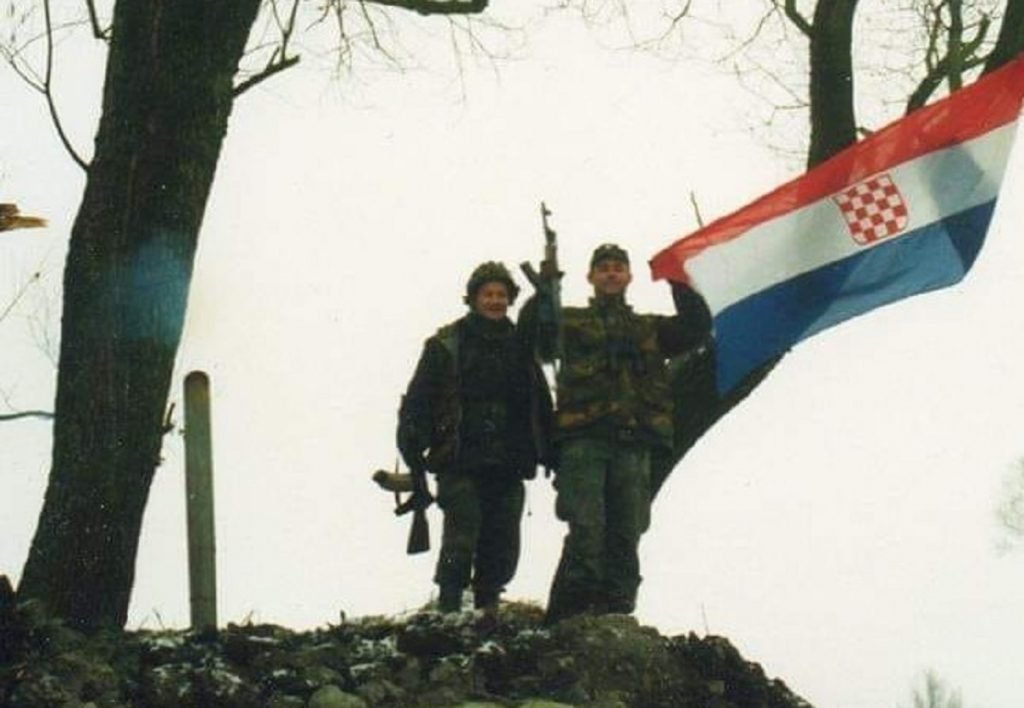After Serb forces conducted a strong offensive on the city of Osijek in mid-December 1991, the Croatian military decided to launch a counterattack. The resulting Operation “DEVIL’S BEAM” was the first successful liberation operation by Croatian forces in eastern Croatia.
Even though Bilje in early September 1991 became the last place to fall under Serb occupation in the region of Baranja, it did not mark the end of hostilities in that area. A part of the Kopački Rit Natural Preserve known as Đavolja Greda (eng. Devil’s beam) became a ”no man’s land” because as a wetland area, it was difficult to control. As the aggression against Osijek intensified in December, villages on the southern part of the Osijek front fell to the enemy which encouraged Serb forces from Kopačevo to occupy the left bank of the Drava opposite the Donjograd Cemetery, Luka Tranzit and Nemetin.
Croatian force were compelled to counterattack because of increased artillery fire upon the city and the fear that Osijek would be split in two. In particular, by capturing Osijek’s Podravlje suburb, the enemy would occupy the entire left bank of the Drava across from the city, and its center would be exposed to direct attack.
After Croatian forces tried unsuccessfully to push enemy forces back deep into occupied territory on 16 and 17 December, the final offensive took place on 18 December 1991 and included the 135th Baranja Brigade, 4th Beli Manastir Police Station, the “Orao” (Eng: Eagle) Osijek Special Police Unit, 160th Osijek Brigade, Special Unit of the General Staff of the Frankopan Battalion and the Rijeka War Flotilla. With artillery support, the resistance of the enemy was broken in the evening. It was a great success for the Croats who showed that they could carry out offensive actions on the Osijek battlefront as well. Croatian forces suffered eight dead in the Battle of Đavolja Greda, among which were Jerko Velat, Mihalj Kiš, Ninoslav Junašević, Ivica Minkoš and Ivan Ereš.
The next morning, Croatian troops were visited by Branimir Glavaš, commander of Osijek defense who congratulated the soldiers and informed them that they had taken possession of a large amount of weapons and equipment during the attack. Among other things, he told the soldiers: In any event, it is our obligation to the Croatian refugees from Baranja to regain that territory as soon as possible. Do your best so that we can break through to Beli Manastir and further up to the border crossing.
Croatian forces did not move on Beli Manastir or the remainder of Baranja, which were eventually peacefully reintegrated to Croatia a few years later. The Đavolja Greda area remained under the control of Croatian forces who relinquished it to the authority of the United Nations Protection Force (UNPROFOR) in the spring of 1992.
Operation “DEVIL’S BEAM” saved the city of Osijek because the enemy would have occupied the suburbs of Podravlje and Tvrđavica.”
Anto Marinić, 4th Beli Manastir Police Station
Magistar sam povijesti. Radno iskustvo stjecao sam u Hrvatskom povijesnom muzeju i na Hrvatskoj radioteleviziji u emisiji TV Kalendar. Autor sam nekoliko knjiga i filmova na temu Domovinskog rata. Osnovao sam i uređujem Facebook stranicu Dogodilo se na današnji dan – Domovinski rat i portal Domovinskirat.hr. Također uređujem i vodim emisiju Domoljubne minute koja se svakog dana emitira na Hrvatskom katoličkom radiju te emisiju Sve za Hrvatsku i Novi valovi dobrote. Vlasnik sam obrta CroHis kojim promičem vrijednosti Domovinskog rata.

